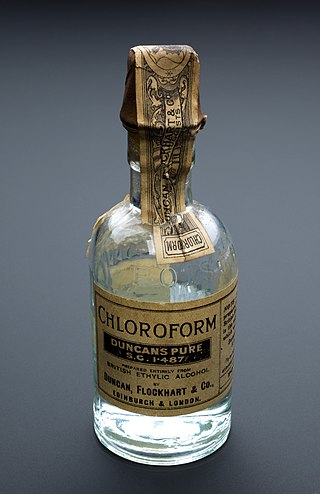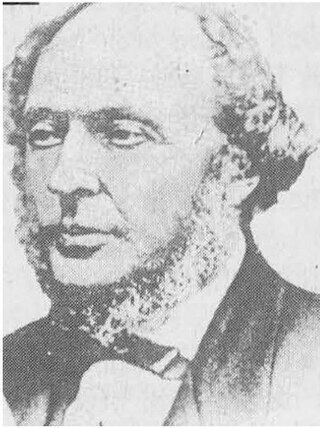
Heroin, also known as diacetylmorphine and diamorphine among other names, is a morphinan opioid substance synthesized from the dried latex of the Papaver somniferum plant; it is mainly used as a recreational drug for its euphoric effects. Medical-grade diamorphine is used as a pure hydrochloride salt. Various white and brown powders sold illegally around the world as heroin are routinely diluted with cutting agents. Black tar heroin is a variable admixture of morphine derivatives—predominantly 6-MAM (6-monoacetylmorphine), which is the result of crude acetylation during clandestine production of street heroin. Heroin is used medically in several countries to relieve pain, such as during childbirth or a heart attack, as well as in opioid replacement therapy.

Morphine, formerly also called morphia, is a strong opiate that is found naturally in opium, a dark brown resin produced by drying the latex of opium poppies. It is mainly used as an analgesic. There are numerous methods used to administer morphine: oral; sublingual; via inhalation; injection into a muscle, injection under the skin, or injection into the spinal cord area; transdermal; or via rectal suppository. It acts directly on the central nervous system (CNS) to induce analgesia and alter perception and emotional response to pain. Physical and psychological dependence and tolerance may develop with repeated administration. It can be taken for both acute pain and chronic pain and is frequently used for pain from myocardial infarction, kidney stones, and during labor. Its maximum effect is reached after about 20 minutes when administered intravenously and 60 minutes when administered by mouth, while the duration of its effect is 3–7 hours. Long-acting formulations of morphine are available as MS-Contin, Kadian, and other brand names as well as generically.

Opium is dried latex obtained from the seed capsules of the opium poppy Papaver somniferum. Approximately 12 percent of opium is made up of the analgesic alkaloid morphine, which is processed chemically to produce heroin and other synthetic opioids for medicinal use and for the illegal drug trade. The latex also contains the closely related opiates codeine and thebaine, and non-analgesic alkaloids such as papaverine and noscapine. The traditional, labor-intensive method of obtaining the latex is to scratch ("score") the immature seed pods (fruits) by hand; the latex leaks out and dries to a sticky yellowish residue that is later scraped off and dehydrated. The word meconium historically referred to related, weaker preparations made from other parts of the opium poppy or different species of poppies.

Thebaine (paramorphine), also known as codeine methyl enol ether, is an opiate alkaloid, its name coming from the Greek Θῆβαι, Thēbai (Thebes), an ancient city in Upper Egypt. A minor constituent of opium, thebaine is chemically similar to both morphine and codeine, but has stimulatory rather than depressant effects. At high doses, it causes convulsions similar to strychnine poisoning. The synthetic enantiomer (+)-thebaine does show analgesic effects apparently mediated through opioid receptors, unlike the inactive natural enantiomer (−)-thebaine. While thebaine is not used therapeutically, it is the main alkaloid extracted from Papaver bracteatum and can be converted industrially into a variety of compounds, including hydrocodone, hydromorphone, oxycodone, oxymorphone, nalbuphine, naloxone, naltrexone, buprenorphine, butorphanol and etorphine.

Laudanum is a tincture of opium containing approximately 10% powdered opium by weight. Laudanum is prepared by dissolving extracts from the opium poppy in alcohol (ethanol).

Denatonium, usually available as denatonium benzoate and as denatonium saccharide (BITTERANT-s), is the most bitter chemical compound known, with bitterness thresholds of 0.05 ppm for the benzoate and 0.01 ppm for the saccharide. It was discovered in 1958 during research on local anesthetics by T.& H. Smith of Edinburgh, Scotland, and registered under the trademark Bitrex.

Papaver somniferum, commonly known as the opium poppy or breadseed poppy, is a species of flowering plant in the family Papaveraceae. It is the species of plant from which both opium and poppy seeds are derived and is also a valuable ornamental plant grown in gardens. Its native range was east of the Mediterranean Sea, but now is obscured by ancient introductions and cultivation, being naturalized across much of Europe and Asia.

Noscapine is a benzylisoquinoline alkaloid, of the phthalideisoquinoline structural subgroup, which has been isolated from numerous species of the family Papaveraceae. It lacks significant hypnotic, euphoric, or analgesic effects affording it with very low addictive potential. This agent is primarily used for its antitussive (cough-suppressing) effects.
The British Pharmacopoeia (BP) is the national pharmacopoeia of the United Kingdom. It is an annually published collection of quality standards for medicinal substances in the UK, which is used by individuals and organisations involved in pharmaceutical research, development, manufacture and testing.

Poppy tea is an herbal tea infusion brewed from poppy straw or seeds of several species of poppy. The species most commonly used for this purpose is Papaver somniferum, which produces opium as a natural defense against predators. In the live flower, opium is released when the surface of the bulb, called the seed pod, is pierced or scraped. For the purpose of the tea, dried pods are more commonly used than the pods of the live flower. The walls of the dried pods contain opiate alkaloids, primarily consisting of morphine.

The Golden Triangle is a large, mountainous region of approximately 200,000 km2 (77,000 sq mi) in northeastern Myanmar, northwestern Thailand and northern Laos, centered on the confluence of the Ruak and Mekong rivers. The name "Golden Triangle" was coined by Marshall Green, a U.S. State Department official, in 1971 in a press conference on the opium trade. Today, the Thai side of the river confluence, Sop Ruak, has become a tourist attraction, with an Opium Museum, a Hall of Opium, and a Golden Triangle Park, and no opium cultivation.
"Polish" heroin is a crude preparation of heroin made from poppy straw. It is an opiate, used recreationally as a psychoactive drug. Poppy straw, like opium, is harvested from the opium poppy. Polish heroin was used mainly in Central and Eastern Europe prior to the dissolution of the Soviet Union and the end of communist control of the countries of the Warsaw Pact or Eastern Bloc.

Codeine is an opiate and prodrug of morphine mainly used to treat pain, coughing, and diarrhea. It is also commonly used as a recreational drug. It is found naturally in the sap of the opium poppy, Papaver somniferum. It is typically used to treat mild to moderate degrees of pain. Greater benefit may occur when combined with paracetamol (acetaminophen) or a nonsteroidal anti-inflammatory drug (NSAID) such as aspirin or ibuprofen. Evidence does not support its use for acute cough suppression in children. In Europe, it is not recommended as a cough medicine in those under 12 years of age. It is generally taken by mouth. It typically starts working after half an hour, with maximum effect at two hours. Its effects last for about four to six hours. Codeine exhibits abuse potential similar to other opioid medications, including a risk of habituation and overdose.
The Government Opium and Alkaloid Factories (GOAF) is an Indian government-owned organisation. Its headquarter is located in New Delhi. The overall supervision of the organisation comes under the purview of Department of Revenue, Ministry of Finance. There are two factories under this organisation - Government Opium and Alkaloid Works, Ghazipur (U.P.) and Government Opium and Alkaloid Works, Neemuch (M.P.).
Legal cultivation of opium for medicinal purposes is carried out in India, only in selected areas, under free licensing conditions. India is the world's largest manufacturer of legal opium for the pharmaceutical industry according to the CIA World Factbook. India is one among 12 countries in world where legal cultivation for medical use is permissible within the ambit of United Nations, Single Convention on Narcotic Drugs 1961. In India legal cultivation is done primarily in Madhya Pradesh, Rajasthan and Uttar Pradesh. Despite producing poppy for opium production India depends heavily on imports to meet need of Poppy seed for edible purposes and domestic Codeine demand for medical purposes . Opium is heavily imported from its top producing nations like Afghanistan. There is also an account of Opium black marketing in India.

Poppy straw is derived from opium poppies that are harvested when fully mature and dried by mechanical means. Opium poppy straw is what remains after the seed pods have been harvested - that is, the dried stalks, stem and leaves of poppies grown for their seeds. The field-dried leaves, stalk, and seed pod are then used in commercial manufacture of morphine or other poppy-alkaloid derived drugs, by first processing the material, separating the seeds, and then making concentrate of poppy straw where no extraction using the traditional methods of latex extraction has been made. The straw was originally considered an agricultural by-product of the mechanised poppy seed harvest, which was primarily grown for its edible and oil-producing seed. This changed in 1927 when János Kabay developed a chemical process to extract morphine from the crushed capsule. Concentrated poppy straw, consisting mainly of the crushed capsule without the seeds, soon became a valuable source of morphine. Today, concentrate of poppy straw is a major source of many opiates and other alkaloids. It is the source of 90% of the world supply of legal morphine and in some countries it also is a source of illegal morphine, which could be processed into illegal heroin.
The pharmaceutical industry in the United Kingdom directly employs around 73,000 people and in 2007 contributed £8.4 billion to the UK's GDP and invested a total of £3.9 billion in research and development. In 2007 exports of pharmaceutical products from the UK totalled £14.6 billion, creating a trade surplus in pharmaceutical products of £4.3 billion.

James Duncan FRSE FRCS FRCSE was a Scottish surgeon and manufacturing chemist responsible for much of the British supply of chloroform in the mid-19th century. From 1839 to 1866 he was Director of Duncan Flockhart & Co one of Scotland’s largest chemical manufacturers.
Donald Cumming Wilson FRSE FRIC (1898–1950) was a 20th-century Scottish manufacturing chemist. During the Second World War he controlled one of the main producers of military painkillers.

William Flockhart, L.R.C.S.E. was a Scottish chemist, a pharmacist who provided chloroform to Doctor James Young Simpson for his anaesthesia experiment at 52 Queen Street, Edinburgh on 4 November 1847. This was the first use of this chemical on humans when Simpson tried it on himself and a few friends, and then used it for pain relief in obstetrics, and surgery. This changed medical practice for over a century, according to the British Medical Journal.













